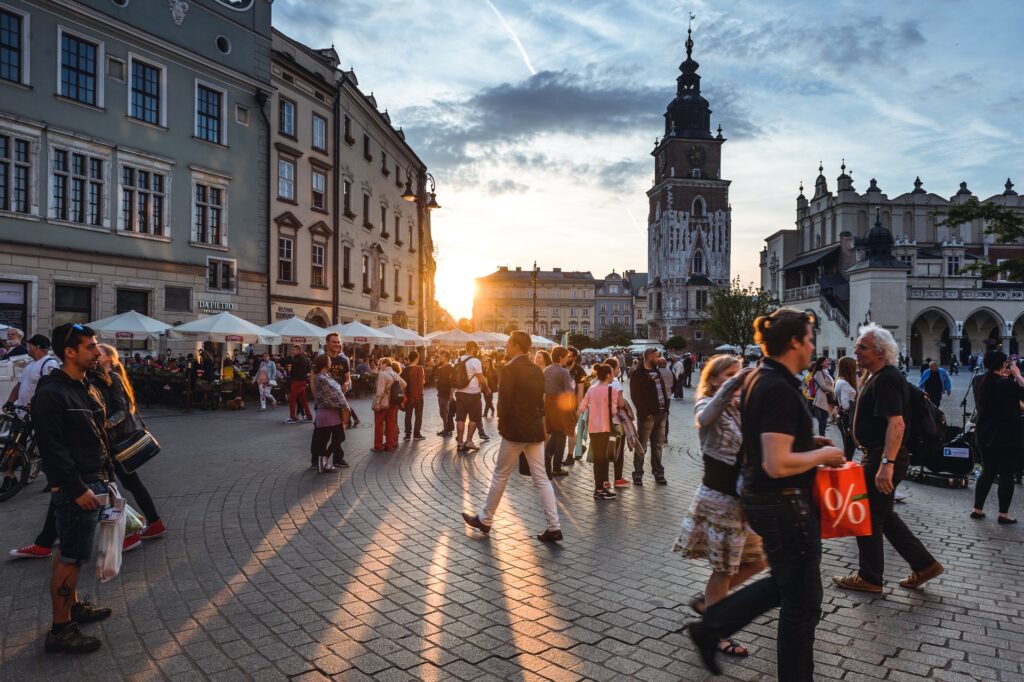How to Create and Show Value – 価値の生み方と見せ方
私は学生時代に都市計画を専攻していましたが、その際のテーマは、町並みの保存と観光の両立でした。既に何十年も前の話で、今考えれば稚拙な内容の論文で、先生はよく私を卒業させてくれた、といったものでしたが、今になって、あの時の考え方が、今の仕事のベースになっていると強く感じます。
「町並み保存」と聞いて皆さんが思いつくのは何でしょうか。恐らく歴史的な町並みを当時そのままの状態で保存しておくという事で、京都、奈良、函館、高山、長崎、広島、金沢、川越、佐原、妻籠など、大小色々あります。いわゆる形態・形状を歴史的考証をベースに正しく保存する、という考え方は町並み保存の基本ですが、これは地域住民の自発的な協力があって、初めて成立するものであると思います。
というのも、様々な設備機器に囲まれて現代社会を生きている私達にとっては、古い「不便な」建物で生活する事は、社会活動に負荷を及ぼすものである可能性があるからです。ディズニーランドのように舞台の書き割り的な町並みならまだしも、地域住民がそこで生活しながら、町並みを保存していくというのは、並大抵の事ではありません。
そもそも何故町並みを保存するのか、という点ですが、その歴史的価値を後世に残していくという記録としての役割もありますが、人間の経済活動に目を転じて見れば、その地域の活性化のためのツールとするから、という点が最も重要です。何故なら、その町並みの歴史価値を活用出来ない(様々な利益を生まない)となれば、地域住民が自発的に保存していこうという動機が薄れてしまう可能性があるからです。
有名な、賑わっている観光地は、観光資産が良好に守られており、そこにお土産屋さん、飲食店、観光案内や宿泊施設など、付随するサービスが発展し、街として大きな利益を得て、それが地域住民に還元され、それが地域への愛着や、さらなる活用・展開への動機に繋がるという好循環を見せています。感染症で大打撃を受けた観光地は多いはずですが、そのような地域は早晩復活すると思います。
一方で、特に地方都市は人口の激減、高齢者割合の増加もあり、稀有の観光資産が手つかずの状態となり、いわゆる”鄙びた”観光地となっているケースも少なくありません。そもそも若者が何故離れてしまうのか、という部分は検証が必要ですが(単に地域への愛着が薄いから、稼げないから、とはならず、他所で得た知見をいつか地元に活かそうとする考えもあるはず)、現実として空洞化してしまった観光地は、観光資源の毀損、魅力の低減、地域の沈滞化、さらなる人材流出という負のサイクルに陥っています。これは簡単に軌道修正出来るものではありません。
大事なのは、その地域の「価値」を地域住民が自覚・自認する所です。
自分一人で何とも出来なくとも、協力しあって何とかしようという動きに繋がります。
一昔前は、観光地としての体裁を整えるためのハードルは、相当高かったように思います。改装費用や街路の整備費用、商売の準備費用、アピールの為の広告費用など・・・。しかし、いま私が注目しているのは、現代社会で観光地として発展・振興する為には、かつて当然に必要とされていた上記のようなスキルは昔ほど重要ではなく、むしろ、インターネットを活用した「見せ方」「コンセプト」の方にシフトしていると感じます。
もっと言えば、「観光地」と「観光地ではない地域」の境は曖昧化しつつあり、「これが日本の魅力だ」と信じていたものが「これが日本の魅力だ」と認識する人々との対象の乖離が、インターネットの発展で詳らかになっているといった光景が広がっているように思えます。例えれば、日本人が気づかなかった日本の魅力に、海外の方が気づき始めているという事でしょう。しかもそれは何も意図しない(ように見える)ショートムービーのポストに起因していたりします。
まだまだ「価値の原石」はあちらこちらに埋まっていると言えると思います。
全世界に価値や魅力を伝える方法は、インターネットにより飛躍的に発展しました。誰でも今すぐ発信者になり、受信者になるという時代です。何れにしても私達は大きなガイドブックを離れ、手元の小さな画面の中の、切り出された情報の中で良し悪しを判断してしまっている(かもしれない)という現実に立脚すれば、その中で価値の原石をどうやって掘り出して、どのようにアピール出来るか、という点に特化し、「バズる」のを待つのが案外近道なのかも知れません。
いま「観光DX」などという言葉が流行っていますが、既存の観光リソースのデジタル化に収まらず、インターネット時代だからこその価値の「生み方と見せ方」を、時に「不真面目に」考えていくというアプローチが必要とされるのではないでしょうか。

When I was a student, I majored in urban planning, and my theme was the compatibility of townscape preservation and tourism. It was decades ago, and in retrospect it was a poor thesis, and I was amazed that my professor let me graduate, but now I strongly feel that the ideas I had then are the basis of my current work.
What do you think of when you hear the phrase “townscape preservation”? Probably, it means preserving historical townscapes in their original state, and there are many such places, large and small, including Kyoto, Nara, Hakodate, Takayama, Nagasaki, Hiroshima, Kanazawa, Kawagoe, Sawara, Tsumago, and so on. The concept of correctly preserving the so-called form and shape of a town based on historical research is the basis of townscape preservation, but I believe that this can only be achieved with the voluntary cooperation of local residents.
This is because, for those of us living in modern society surrounded by a variety of equipment and devices, living in old “inconvenient” buildings can be a burden on social activities. If the townscape is a stage-written townscape like Disneyland, it is still an extraordinary task to preserve the townscape while the local residents live there.
The most important reason for preserving a townscape is to use it as a tool to revitalize the area from the viewpoint of human economic activities. If the historical value of the townscape cannot be utilized (i.e., it does not generate various benefits), local residents may be less motivated to voluntarily preserve it.
In a well-known and prosperous tourist destination, tourist assets are well preserved, and services such as souvenir shops, restaurants, tourist information, and lodging facilities are developed, resulting in a large profit for the town, which is then returned to the local residents, leading to their attachment to the area and motivation for further utilization and development. It is a virtuous cycle. There must be many tourist destinations that have been hit hard by infectious diseases, but I believe that such areas will revive sooner or later.
On the other hand, there are many cases, especially in regional cities, where the population has been drastically reduced and the percentage of elderly people has been increasing, resulting in the rare tourism assets being left untouched and becoming so-called “remote” tourist destinations. Although it is necessary to examine why young people are leaving tourism in the first place (it is not simply because they have little attachment to the region or because they cannot earn enough money. In reality, hollowed-out tourist areas have fallen into a negative cycle of damaged tourist resources, reduced attractiveness, regional stagnation, and further exodus of human resources. This is not something that can be easily corrected.
What is important is for local residents to become aware and self-aware of the “value” of the region.
Even if they cannot do anything on their own, they will cooperate with each other to do something about it.
A long time ago, the hurdles to making an area presentable as a tourist destination were quite high. The cost of renovation, maintenance of streets, preparation for business, advertising to appeal to the public, etc…. However, what I am focusing on now is that in order to develop and promote as a tourist attraction in today’s society, the above skills that were once naturally required are not as important as in the past, but rather, I feel that there is a shift toward “how to show” and “concept” utilizing the Internet.
More specifically, the boundary between “tourist attractions” and “non-tourist areas” is becoming blurred, and the development of the Internet seems to be widening the gap between what people used to believe was “the charm of Japan” and what they perceive as “the charm of Japan”. In other words, foreign people are beginning to notice things about Japan that Japanese people did not notice before. Moreover, this may be due to the (seemingly) unintentional posting of short movies.
I think it can be said that there are still “gemstones of value” buried here and there.
The Internet has dramatically developed the method of communicating value and appeal to the entire world. We live in an age where anyone can be both a sender and a receiver right now. In any case, if we leave the big guidebooks behind, and realize that we may (or may not) be making judgments of good or bad based on the information that is cut out of the small screen at our fingertips, then we should focus on how we can dig out the gem of value and how we can promote it, and wait for the “buzz” to spread. It may be a shortcut to wait for the “buzz” to spread.
The term “tourism DX” is now in vogue, and I think it is necessary to take an approach that goes beyond the digitalization of existing tourism resources and think “seriously” at times about “how to create and show” value in this Internet age.
